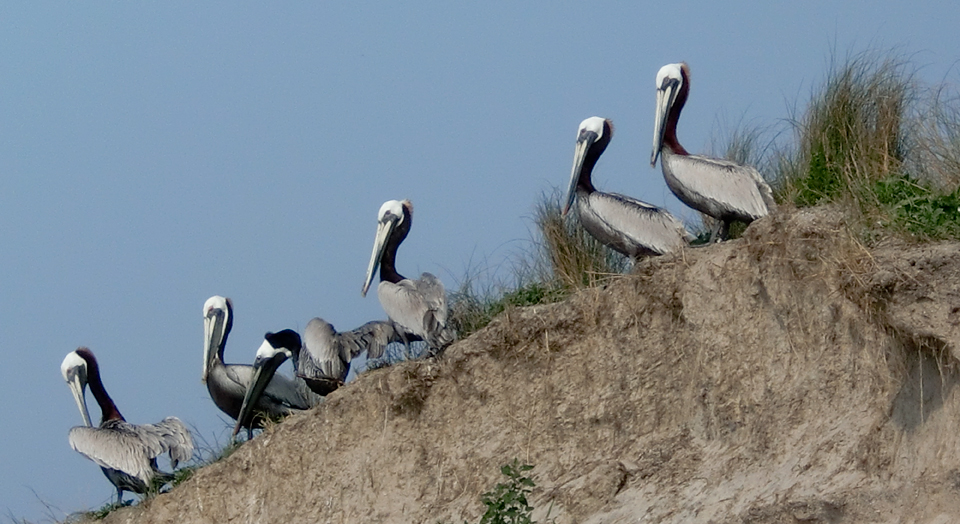"Bird Island": A Dredge Spoil Island
❝This small island is the result of dredging, a technique used to keep the channels around North Carolina's Oregon Inlet open to boats. Machines gather bottom sediment and dispose it in a different location.

According to Brian Bockhahn of the North Carolina Department of Environment and Natural Resources, 'Bird Island' began in the early 80s and is currently about 20 acres. It is one of two major rookeries in North Carolina and is well-protected by law enforcement.
Brown pelicans have nested here for more than 30 years—after the vegetation had grown tall and shrubby enough to support their nests.

The nests contain one to three eggs and rest on the ground among the low bushes. After four to five weeks, the babies hatch. Between 500 to 1500 fledglings emerge from this island each year.
All the youngsters are banded and tracked by the US Fish and Wildlife Service (FWS). The pelicans reach breeding maturity in three to four years and live up to 20 years. Because they have few predators, most die while tangled in fishing lines and nets or break their wings diving incorrectly.

Over the years, a variety of animals have made their way from the mainland to the tiny island. Mammals such as deer, mice, and raccoon have even taken up residence there.
In 2016, the enormous colony of Brown pelicans that nested on this island in Oregon Inlet relocated to an island in Ocracoke due to overgrown vegetation and the presence of predators, such as foxes. Later, the North Carolina Fish and Wildlife Service made arrangements to have the foxes removed.
Around 2020, the island filled up again with not just large numbers of Brown pelicans but also Royal terns, four gull species, White ibis, Great egrets, plus songbirds, including Marsh wrens and Common yellowthroats.
'Bird Island' is open to the public outside of the breeding season—look at posted signs for details.❞
